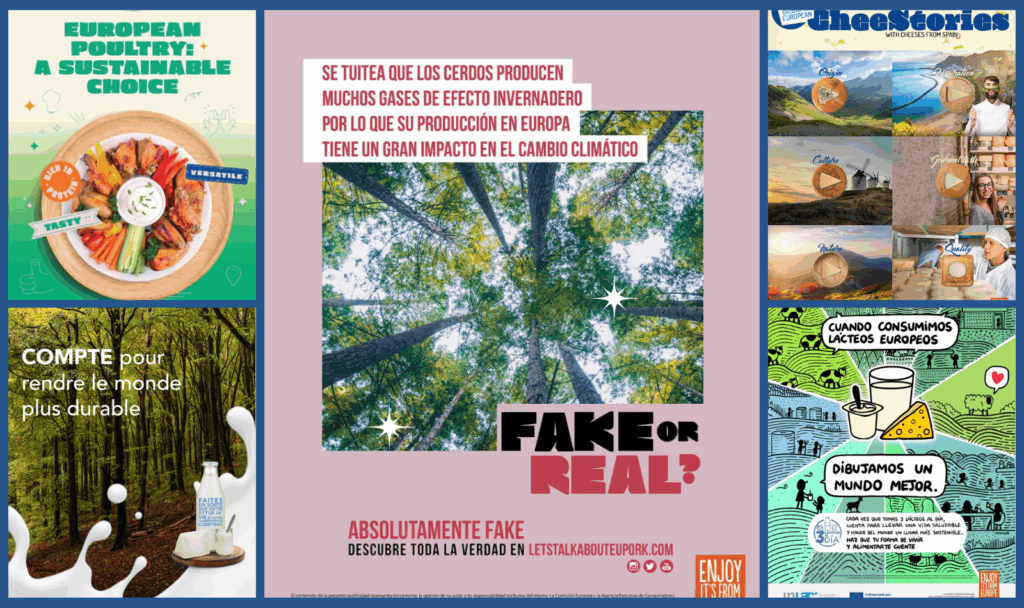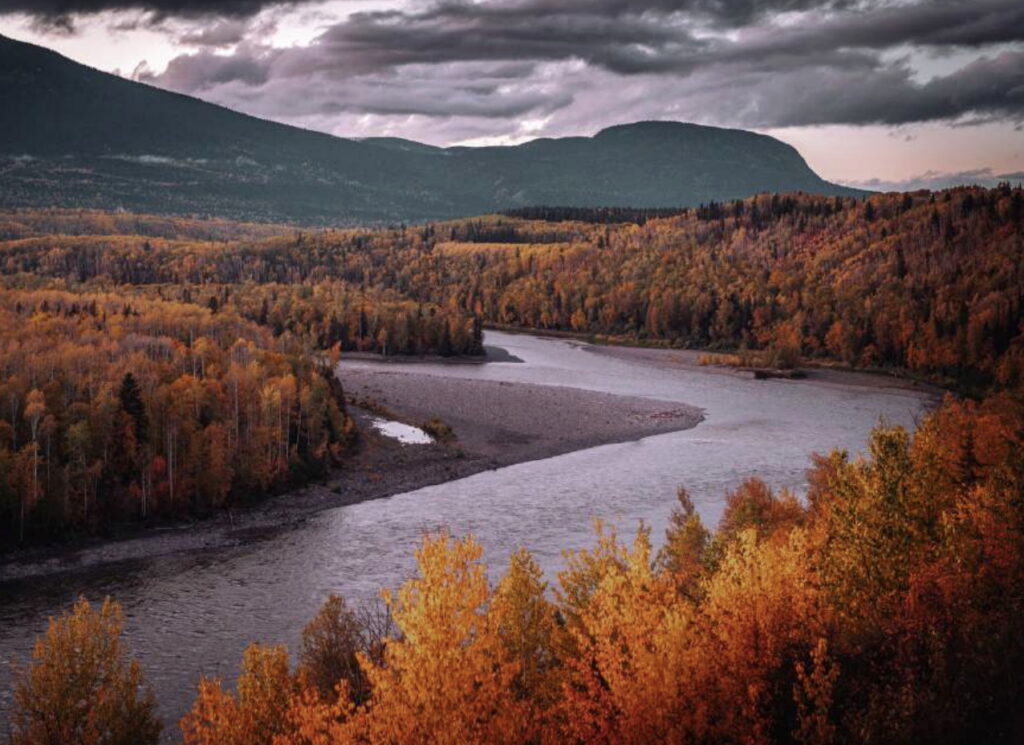Christmas may be over, but that hasn’t stopped the reindeer talk. In particular, there’s been a lot of chatter about how climate change may affect them. Some people seem to think we don’t need to worry – but what does the science say?
The BBC recently issued a clarification about one of its programmes on BBC Two, with Simon Reeve reporting from Russia. As the broadcaster’s statement reads:
“This programme suggested that many reindeer populations are in steep decline because of climate change. It would have been more accurate to say that many reindeer populations are threatened by it.”
In the show, which aired in October, Reeve spoke with a reindeer herder in Northern Russia who described how some of his reindeer calves died due to freezing rain.
Reeve said: “Weather here is now much less predictable. They’ve had warm spells when it should be minus 30. Instead of snow they’ve had rain which can freeze on the ground, making it hard for reindeer to get at the lichen.”
“As they couldn’t get to the lichen, most of the young ones, the calves, died,” the herder explained.
“Are you saying that reindeer are starving to death?” Reeve asked. “Yes” replied the herder.
“Across northern Russia, many reindeer populations are in steep decline because of climate change. Tens of thousands of reindeer have died. People and wildlife who survive at the edge of existence are already feeling the effects of our warming world,” the programme said.
So, does the BBC’s clarification mean reindeer are not being hurt by climate change?
Are reindeer threatened by climate change?
The short answer, as with much of the science around climate change, is: It’s complicated.
A range of studies show reindeer are affected by a diverse array of factors including the local economy, extreme weather events, and changes in the climate.
But to muddle things further, recent studies show that climate change may impact reindeer in different ways, both negatively and positively. And different populations may feel different impacts.
According to a paper published in June 2017 in Environmental Reviews that looks over recent studies on reindeer and caribou populations, climate change can bring both positive and negative impacts including more wildfires in winter areas, more insects in the summer, changes in the type and amount of food available, more ice in the winter, changes to springtime cycles (ex. when plants bloom), and changes to migration patterns and behaviours.
As the study writes: “The extensive distribution of Rangifer [reindeer and caribou] globally, with different subspecies occupying a relatively diverse range of habitats, presents difficulty in generalizing how climate change effects will be realized across populations.
“On top of this, variability and complexity in climate patterns further serve to complicate the observed heterogeneity in climate change effects.”
As one of the authors of the study, Conor Mallory from the Department of Biological Sciences at the University of Alberta, Edmonton, explained to DeSmog UK: “How these different factors … will interact is unclear. The net result of these varying effects on caribou and reindeer populations are hard to predict and will likely be different across their distribution.”
How has climate change impacted reindeer populations so far?
The most recent study looking at this question was published in 2016 in the journal PLOS. According to that paper – which looked at reindeer populations in Eurasia for a period of up to 70 years –worldwide, reindeer populations have not declined.
But a set of studies, published around eight years ago, found that populations had declined. For ongoing monitoring of population numbers, there is a website called Carma where scientists, managers and community people try to keep population estimates as up to date as possible.
The PLOS paper showed that while at a quick glance, taken together, reindeer numbers across all regions haven’t declined, there are a lot of differences and changes between populations.
As Alessia Uboni, a guest researcher at the Centre for Ecological and Evolutionary Synthesis University of Oslo, Norway, and one of the study’s authors, told DeSmog UK: “The most important take-home message from our study is that reindeer populations have fluctuated differently in different regions of Eurasia, likely due to the different regional histories and local conditions.”
This could include socio-economic impacts, local weather patterns or the loss of habitat due to human activities. The study also notes that for semi-domesticated reindeer populations, “management strategies may have masked the effects of climate change.”
The study gave an interesting case study that helps show how these different impacts can play out in a specific population. In the Yamal Peninsula – in southwest Siberia in Russia – there are semi-domesticated reindeer populations and the area is known for its steadily increasing number of reindeer. This is because, when the oil and gas industry came into the region, the demand for reindeer products increased. In turn, this supported reindeer husbandry and helped boost reindeer numbers.
However, according to unpublished data cited by the study, during the 2013-14 winter around “61,000 animals out of a population of ca. 300,000” died due to severe ice crusts forming an obstacle to the reindeer’s food. This demonstrates the “significant impact” such severe weather events can have, the study stated.
The study goes on the say: “Extreme weather events that are short lived, but have disproportionally strong impacts on survival, such as ice-crust formation events, may be better predictors of reindeer population dynamics, but data on these events are often difficult to obtain.”
So, how important is looking at population numbers when it comes to understanding climate impacts on a species?
According to Uboni: “Analyzing the size of animal populations is surely the easiest and most common way to assess the status of a certain species. Other indicators may be reproductive rates (i.e. how many young are born per female each year) or incidence of diseases, among others.
“However, those latter measures are mirrored in population size, i.e. if less young are born or more individuals die due to diseases, the population size will also change. Therefore, analyzing changes in population size is a reliable method to assess a species status.”
This is echoed by Mallory, who explained: “Abundance is of course an important indication of how a population is doing, but it can be difficult to link to something broad like climate change.
“There are many things that can cause caribou and reindeer populations to fluctuate, and careful analysis is required to understand likely causes in a particular case. So, population trends are just one of multiple factors that researchers use. Many studies look to things like how summer and winter environmental conditions influence caribou body condition, reproduction, etc. to understand how climate conditions affect caribou and reindeer populations.”
Can reindeer adapt to climate change?
Given that climate change can have a variety of impacts on reindeer, and given that populations seem to be stable overall (while remembering there are big differences between populations), it’s fair to ask what this means for the animals going forward.
As the studies note, reindeer live in many different areas across the circumpolar region – this means, among other things, different habitats and different weather patterns.
At first glance then, it could be tempting to call reindeer a “resilient” species in the face of climate change. But that might be over-stating their ability to adapt.
“The broad range of habitats and environmental conditions that caribou and reindeer inhabit does point to their relative adaptability as a species,” said Mallory. “There have also been some publications that indicate caribou and reindeer might have some resilience to certain aspects of climate change.”
“However,” he added, “adapting to rapid climate change is something different than being able to live within a range of environmental conditions over recent history, and so we should be cautious when considering reindeer resilience.”
And as Uboni points out: “Reindeer are adapted to cold climates, in terms of their physiology and life style. Based on that, we cannot state that they are resilient to climate change.”
Uboni’s study notes that it is important not to generalize about future reindeer numbers when it comes to climate change. This section from the study perhaps explains it best:
“Effects of global climate change may not be apparent in all reindeer populations yet, but may become apparent in the future. Understanding how population dynamics are coupled to, or independent from, historic climatic forcing cannot conclusively contribute to future predictions of climate change effects on the viability of a given species, especially if predicted changes in climate will go beyond the previously experienced range of variability.
“We thus cannot conclude if the climate in the future will have similar effects as the ones we observed in this analysis. Moreover, the effects of climate change will continue to act together with and be influenced by human disturbances and biotic interactions.”
In other words, the way climate change will play out in the different regions where reindeer live, and how the populations will respond, is difficult to predict.
Climate change may also be happening faster and more extremely than past changes in the climate, which adds another layer of complexity to trying to understand what might happen.
As Mallory’s study puts it: “the capacity for success across a range of habitats results from behaviours and adaptations developed over evolutionary time scales and within the bounds of historic environmental variation. Rapid environmental change may well compromise the ability of Arctic species to adapt.”
Finally, there is the more immediate human activities can have on animals – something both authors highlighted.
As the climate warms, and the arctic region becomes more accessible, more resources such as oil and gas, along with minerals, are open to be exploited. Sometimes this can help bolster population numbers due to a demand for the animals. But in other cases this can limit the areas reindeers can live, perhaps changing migration patterns or where they can breed.
Human-driven disturbances can have a more immediate impact than climate change, Mallory’s study states: “The potential for habitat loss, fragmentation, and degradation from increased human activity in the Arctic could impair the ability of Rangifer to adjust to a rapidly changing environment.”
How resource extraction may impact reindeer is an area that needs more study alongside climate change, Uboni told DeSmog UK. “In many parts of the Arctic and Subarctic regions, resource extraction is altering or reducing the habitat used by northern species (reindeer among others),” Uboni said.
“Due to their adaptation to those ecosystems, northern species have nowhere else to go. If we continue to damage or destroy their habitat, they may severely suffer.”
Image credit: Nathanael Coyne/Flickr CC BY–NC–ND 2.0
Subscribe to our newsletter
Stay up to date with DeSmog news and alerts






